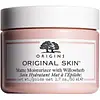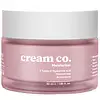What's inside
What's inside
 Key Ingredients
Key Ingredients

 Benefits
Benefits

 Concerns
Concerns

 Ingredients Side-by-side
Ingredients Side-by-side

Water
Skin ConditioningDimethicone
EmollientAlcohol Denat.
AntimicrobialGlycerin
HumectantSilica
AbrasiveButylene Glycol
HumectantCitrus Aurantium Dulcis Peel Oil
MaskingCitrus Limon Peel Oil
MaskingPelargonium Graveolens Flower Oil
MaskingLavandula Angustifolia Oil
MaskingAmyris Balsamifera Bark Oil
MaskingCitrus Aurantium Bergamia Fruit Oil
MaskingEugenia Caryophyllus Leaf Oil
MaskingRosa Damascena Flower Oil
MaskingEucalyptus Globulus Leaf Oil
PerfumingZingiber Officinale Root Oil
MaskingMentha Viridis Leaf Oil
AstringentLimonene
PerfumingLinalool
PerfumingCitronellol
PerfumingCitral
PerfumingGeraniol
PerfumingEugenol
PerfumingDimethicone Crosspolymer
Emulsion StabilisingAmmonium Acryloyldimethyltaurate/Vp Copolymer
Pyrus Malus Fruit Extract
Skin ConditioningCucumis Sativus Fruit Extract
EmollientEpilobium Angustifolium Flower/Leaf/Stem Extract
Skin ConditioningCistus Incanus Flower/Leaf/Stem Extract
Skin ConditioningSucrose
HumectantBambusa Vulgaris Extract
Skin ConditioningPisum Sativum Extract
Skin ConditioningCastanea Sativa Seed Extract
Skin ConditioningAlbizia Julibrissin Bark Extract
MaskingSalicylic Acid
MaskingCaffeine
Skin ConditioningArginine
MaskingSodium Hyaluronate
HumectantScutellaria Baicalensis Root Extract
AstringentLaminaria Saccharina Extract
Skin ProtectingLaminaria Digitata Extract
Skin ProtectingPhospholipids
Skin ConditioningHydrolyzed Jojoba Esters
Skin ConditioningGlucosamine Hcl
Lauryl PEG-9 Polydimethylsiloxyethyl Dimethicone
Skin ConditioningDimethicone/Vinyl Dimethicone Crosspolymer
Skin ConditioningCaprylyl Glycol
EmollientAcrylates/C10-30 Alkyl Acrylate Crosspolymer
Emulsion StabilisingTocopheryl Acetate
AntioxidantTromethamine
BufferingSilica Silylate
EmollientHexylene Glycol
EmulsifyingSodium Polyacrylate
AbsorbentDisodium EDTA
Phenoxyethanol
PreservativeMica
Cosmetic ColorantCI 77891
Cosmetic ColorantCI 77491
Cosmetic ColorantWater, Dimethicone, Alcohol Denat., Glycerin, Silica, Butylene Glycol, Citrus Aurantium Dulcis Peel Oil, Citrus Limon Peel Oil, Pelargonium Graveolens Flower Oil, Lavandula Angustifolia Oil, Amyris Balsamifera Bark Oil, Citrus Aurantium Bergamia Fruit Oil, Eugenia Caryophyllus Leaf Oil, Rosa Damascena Flower Oil, Eucalyptus Globulus Leaf Oil, Zingiber Officinale Root Oil, Mentha Viridis Leaf Oil, Limonene, Linalool, Citronellol, Citral, Geraniol, Eugenol, Dimethicone Crosspolymer, Ammonium Acryloyldimethyltaurate/Vp Copolymer, Pyrus Malus Fruit Extract, Cucumis Sativus Fruit Extract, Epilobium Angustifolium Flower/Leaf/Stem Extract, Cistus Incanus Flower/Leaf/Stem Extract, Sucrose, Bambusa Vulgaris Extract, Pisum Sativum Extract, Castanea Sativa Seed Extract, Albizia Julibrissin Bark Extract, Salicylic Acid, Caffeine, Arginine, Sodium Hyaluronate, Scutellaria Baicalensis Root Extract, Laminaria Saccharina Extract, Laminaria Digitata Extract, Phospholipids, Hydrolyzed Jojoba Esters, Glucosamine Hcl, Lauryl PEG-9 Polydimethylsiloxyethyl Dimethicone, Dimethicone/Vinyl Dimethicone Crosspolymer, Caprylyl Glycol, Acrylates/C10-30 Alkyl Acrylate Crosspolymer, Tocopheryl Acetate, Tromethamine, Silica Silylate, Hexylene Glycol, Sodium Polyacrylate, Disodium EDTA, Phenoxyethanol, Mica, CI 77891, CI 77491
Water
Skin ConditioningIsononyl Isononanoate
EmollientCaprylic/Capric Triglyceride
MaskingGlycerin
HumectantPropylene Glycol Dibenzoate
Skin ConditioningSodium Acrylates Copolymer
Panthenol
Skin ConditioningButylene Glycol
HumectantBellis Perennis Flower Extract
Skin ConditioningPentylene Glycol
Skin ConditioningCaprylyl Glycol
EmollientAscorbyl Tetraisopalmitate
AntioxidantNiacinamide
SmoothingLecithin
EmollientSaccharide Isomerate
HumectantPisum Sativum Extract
Skin ConditioningChamomilla Recutita Extract
Skin ConditioningEthylhexylglycerin
Skin ConditioningPropanediol
SolventSodium PCA
HumectantErythritol
HumectantCarrageenan
Hydrolyzed Glycosaminoglycans
HumectantSodium Hyaluronate
HumectantXanthan Gum
EmulsifyingCitric Acid
BufferingSodium Citrate
BufferingBenzoic Acid
MaskingSorbic Acid
PreservativeHydrolyzed Hyaluronic Acid
HumectantHyaluronic Acid
HumectantSodium Hyaluronate Crosspolymer
HumectantSodium Hydroxide
BufferingWater, Isononyl Isononanoate, Caprylic/Capric Triglyceride, Glycerin, Propylene Glycol Dibenzoate, Sodium Acrylates Copolymer, Panthenol, Butylene Glycol, Bellis Perennis Flower Extract, Pentylene Glycol, Caprylyl Glycol, Ascorbyl Tetraisopalmitate, Niacinamide, Lecithin, Saccharide Isomerate, Pisum Sativum Extract, Chamomilla Recutita Extract, Ethylhexylglycerin, Propanediol, Sodium PCA, Erythritol, Carrageenan, Hydrolyzed Glycosaminoglycans, Sodium Hyaluronate, Xanthan Gum, Citric Acid, Sodium Citrate, Benzoic Acid, Sorbic Acid, Hydrolyzed Hyaluronic Acid, Hyaluronic Acid, Sodium Hyaluronate Crosspolymer, Sodium Hydroxide
 Reviews
Reviews

Ingredients Explained
These ingredients are found in both products.
Ingredients higher up in an ingredient list are typically present in a larger amount.
Butylene Glycol (or BG) is used within cosmetic products for a few different reasons:
Overall, Butylene Glycol is a safe and well-rounded ingredient that works well with other ingredients.
Though this ingredient works well with most skin types, some people with sensitive skin may experience a reaction such as allergic rashes, closed comedones, or itchiness.
Learn more about Butylene GlycolCaprylyl Glycol is a humectant and emollient, meaning it attracts and preserves moisture.
It is a common ingredient in many products, especially those designed to hydrate skin. The primary benefits are retaining moisture, skin softening, and promoting a healthy skin barrier.
Though Caprylyl Glycol is an alcohol derived from fatty acids, it is not the kind that can dry out skin.
This ingredient is also used as a preservative to extend the life of products. It has slight antimicrobial properties.
Learn more about Caprylyl GlycolGlycerin is already naturally found in your skin. It helps moisturize and protect your skin.
A study from 2016 found glycerin to be more effective as a humectant than AHAs and hyaluronic acid.
As a humectant, it helps the skin stay hydrated by pulling moisture to your skin. The low molecular weight of glycerin allows it to pull moisture into the deeper layers of your skin.
Hydrated skin improves your skin barrier; Your skin barrier helps protect against irritants and bacteria.
Glycerin has also been found to have antimicrobial and antiviral properties. Due to these properties, glycerin is often used in wound and burn treatments.
In cosmetics, glycerin is usually derived from plants such as soybean or palm. However, it can also be sourced from animals, such as tallow or animal fat.
This ingredient is organic, colorless, odorless, and non-toxic.
Glycerin is the name for this ingredient in American English. British English uses Glycerol/Glycerine.
Learn more about GlycerinWe don't have a description for Pisum Sativum Extract yet.
Sodium Hyaluronate is hyaluronic acid's salt form. It is commonly derived from the sodium salt of hyaluronic acid.
Like hyaluronic acid, it is great at holding water and acts as a humectant. This makes it a great skin hydrating ingredient.
Sodium Hyaluronate is naturally occurring in our bodies and is mostly found in eye fluid and joints.
These are some other common types of Hyaluronic Acid:
Learn more about Sodium HyaluronateWater. It's the most common cosmetic ingredient of all. You'll usually see it at the top of ingredient lists, meaning that it makes up the largest part of the product.
So why is it so popular? Water most often acts as a solvent - this means that it helps dissolve other ingredients into the formulation.
You'll also recognize water as that liquid we all need to stay alive. If you see this, drink a glass of water. Stay hydrated!
Learn more about Water